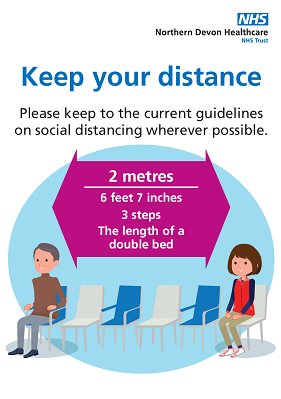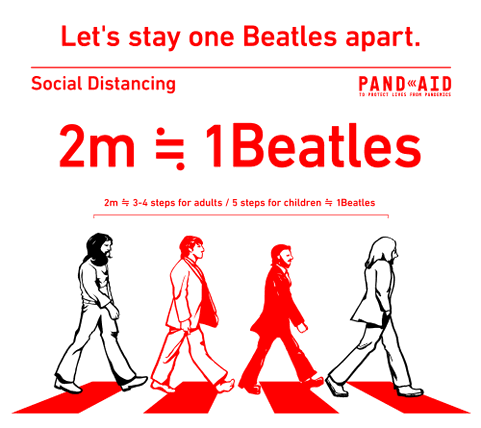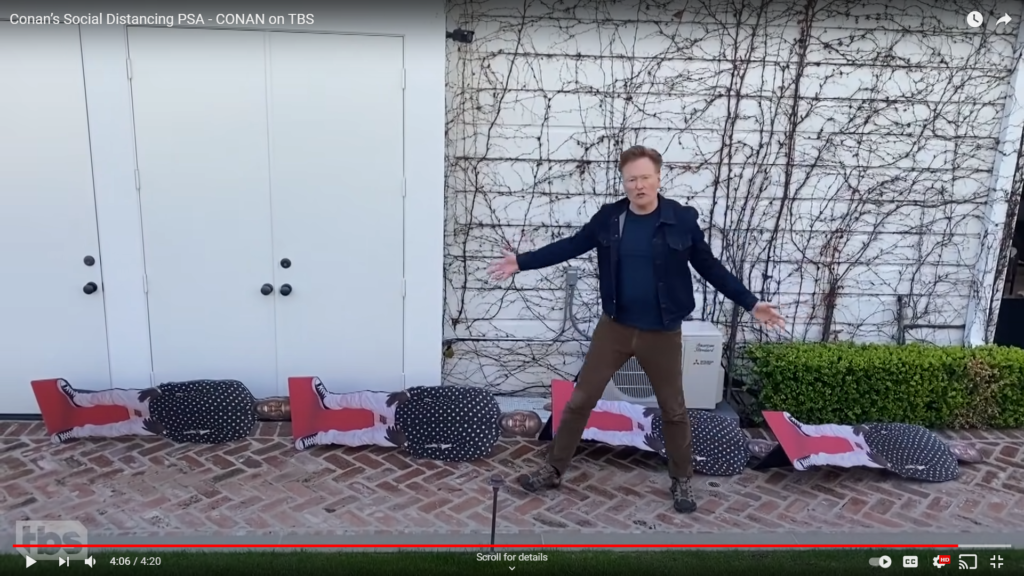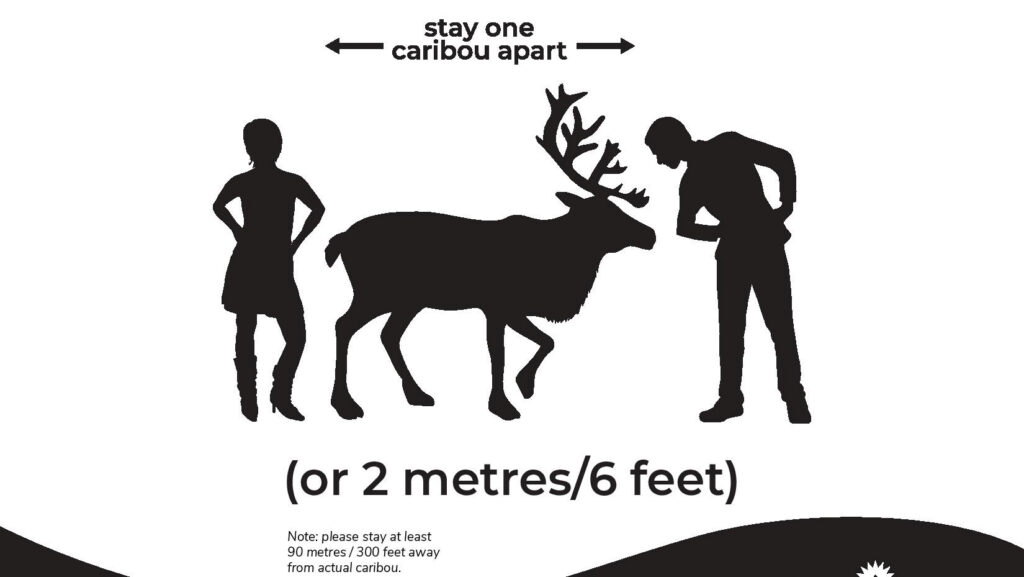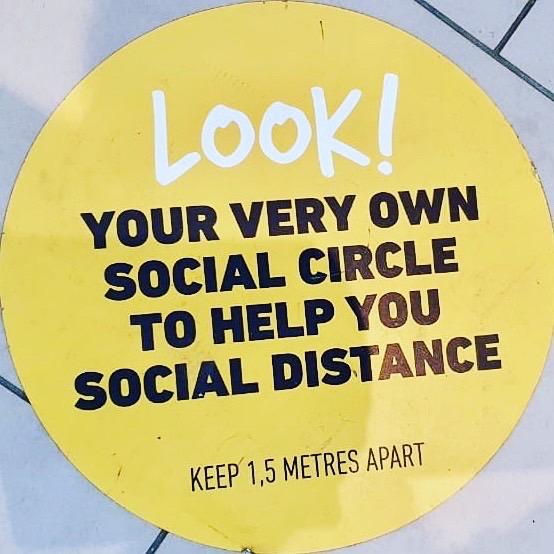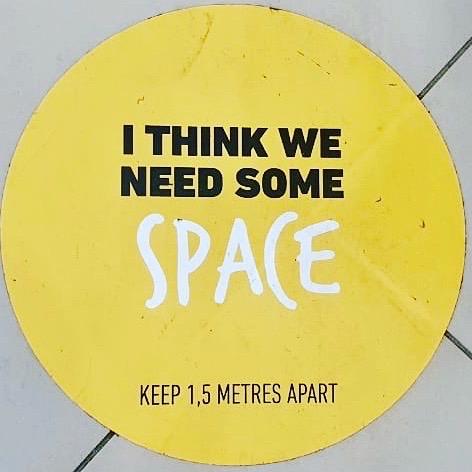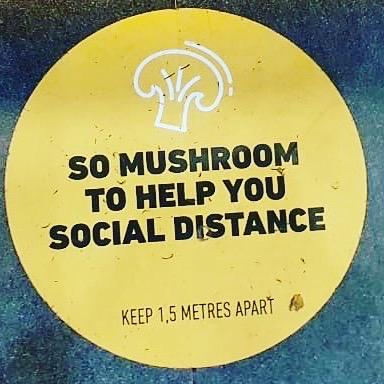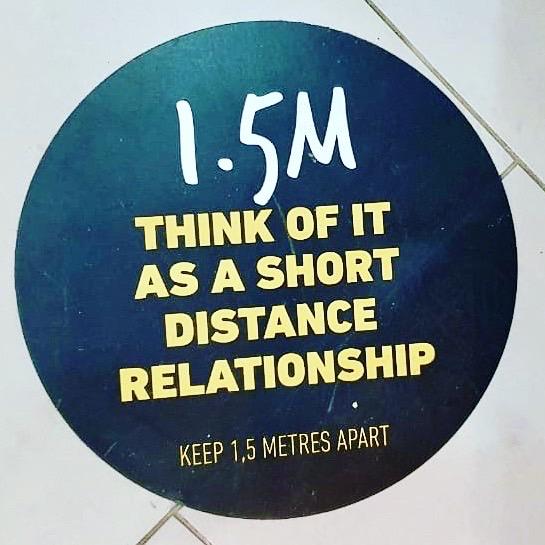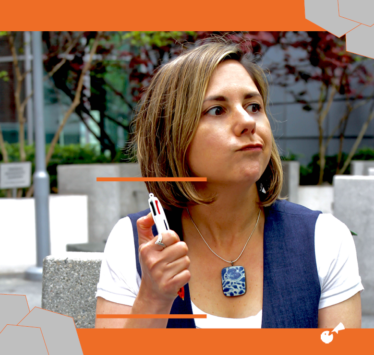
Pandemic Musings (part 1 of 2)
Pandemic Musings (part 1 of 2)
There has been a lot of coverage on what we’re learning about behavior change through the Covid-19 pandemic. Rightfully so, since:
“We’ve probably undergone the greatest behavior change experiment in human history in the last nine months.”
– Jay Van Bavel, Association Professor of Psychology at New York University, during this webinar on How to Change Behavior During a Pandemic.
This past year left me with a set of reflections on what it takes to create and communicate change. This is what I’m calling my pandemic musings, or my “pandemusings”….
I have 4 points to share overall: one is featured in this post and the other 3 will appear together in the next one.
Why the split? Well, frankly, I had too much fun writing this first one and it ended up using all the space of a single post.
Warning: dry humor and sarcasm ahead. Enjoy!
Musing #1: Humans are terrible at determining distance.
Whether it’s 6 feet or 2 meters, it seems most humans have NO IDEA how close or far away that is.
Therefore, a lot of communication efforts have been dedicated to helping humans determine distance.
In the process of getting this kind of message right, behavior change communicators tried a number of different approaches.
For example…
We tried: referencing common objects
Knowing it can be hard to conceptualize a distance of six-feet in the abstract, communicators featured common objects as a reference point in the hope that envisioning the length of a door or bathtub would make the distance more tangible and real.
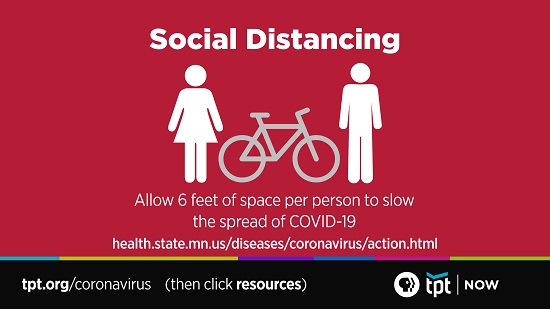
For example: imagining a standard-sized bicycle being between you and the next person is likely easier to envision than simply thinking about six feet.
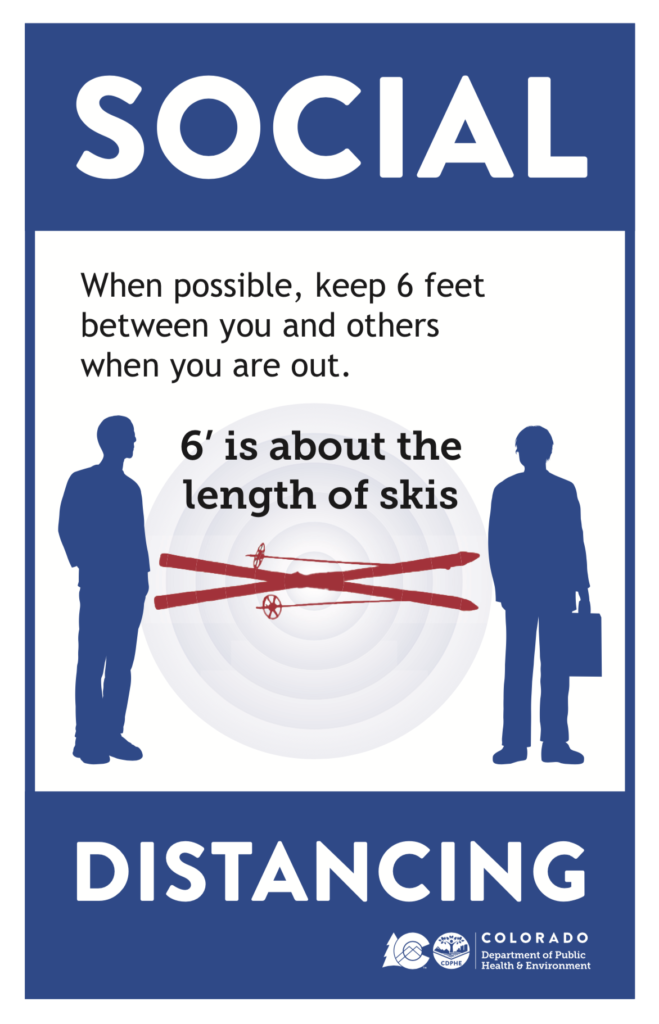
For the outdoor enthusiasts of Colorado, a pair of skis may be more relevant than a bicycle (especially this time of year).
However, you can’t be ON the skis to social distance. You would have to just imagine they’re there, or lay them down in front of you, or hold them by the very tips.
I don’t believe the poles are required for measuring…or for conceptualizing distance.

However, if you’re more familiar with waving around brooms (I’m looking at YOU, Harry Potter!) then this visual may be most helpful.
While you’re busy pointing brooms at strangers, you may also want to give them a good brushing to get those Covid germs off them.
Even this approach can get a bit confusing. Like when you reference the size of a double bed (is that the same as a queen-sized bed?) and show a set of chairs at the same time.
Maybe saying “4 seats apart” would have been clearer?
We tried: having fun with common objects
If common objects was the theme, then it’s natural to think about ways it can be made more fun and memorable.
It may be one Beatle laying down, but I’m pretty sure it’s 2 Beatles walking.
Conan O’Brien, with the help of visual aids, suggests staying 4 Kevin Hart’s away from the next person to be extra safe. Clicking on the image above takes you to the YouTube video clip.
Fun fact: Kevin Hart is actually 5’4″ tall, so four of him laying down would be more than 21 feet of distance.
We tried: making a connection to nature
Why wouldn’t we, right?!?!
It seems like a good opportunity to reference species people enjoy and are familiar with, while also encouraging Covid-safe behaviors.
But, it didn’t always send the right message…
Like, stand one caribou apart from one another but please, please, please don’t ever stand this close to a caribou.
In fact, you should be 300 feet away from an actual caribou.
We also don’t recommend staring down to a caribou, speaking in patronizing tones, or taking a hands-on-hips disapproving stance in front of them. They seem prone to taking offense to that.
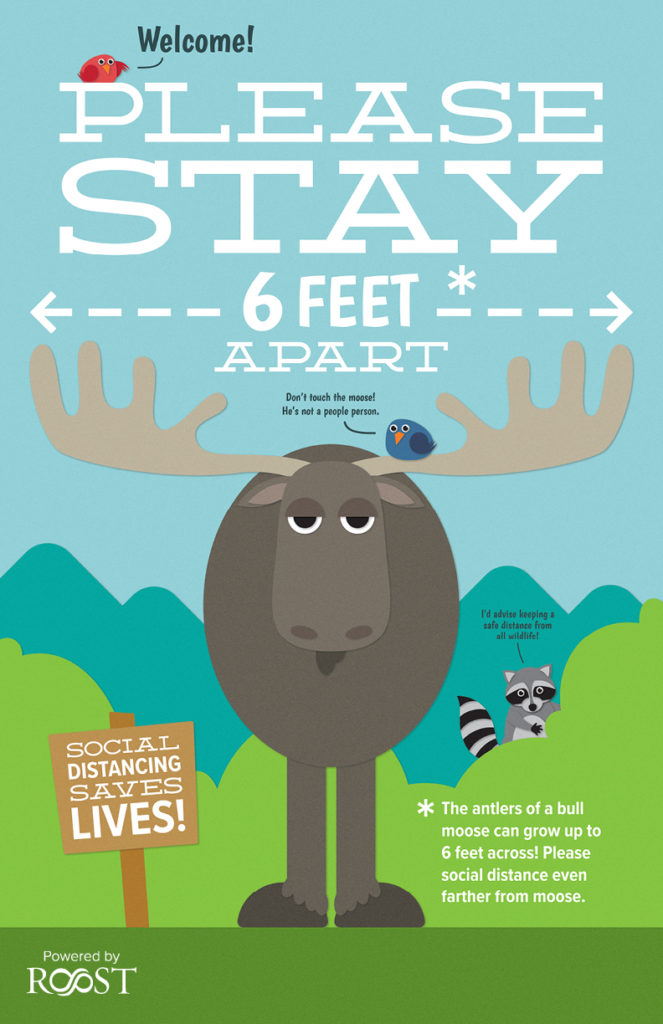
Here’s a classic example of: while we have your attention, here’s 3 other things we’d like you to do as well.
Stay 6 feet apart
Don’t touch the moose
Keep a safe distance from all wildlife
Social distance even further from moose
Save lives!
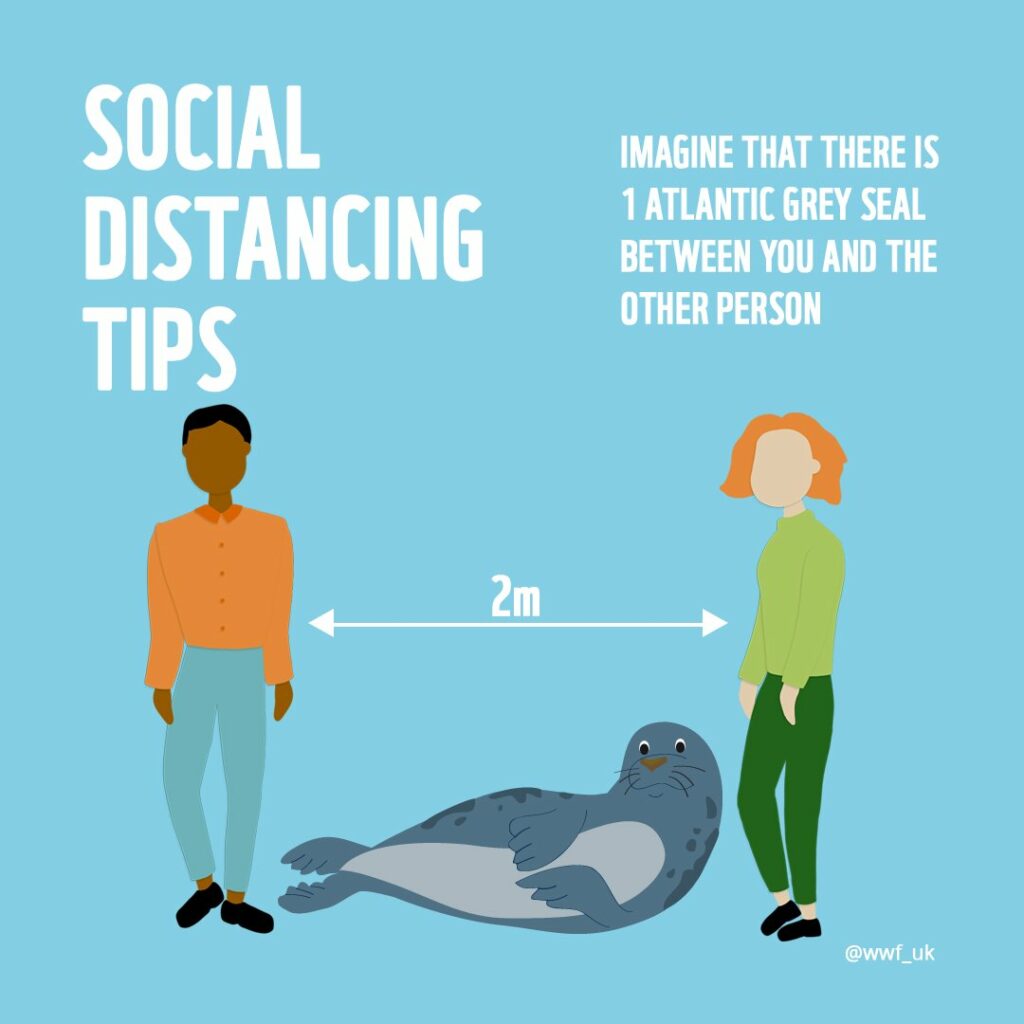
I can hear my peers working tirelessly to encourage safe viewing distances from seals audibly gasp in horror at this one.
For future reference if you see a seal on a beach: give it as much space as possible, to the point where the seal looks to be the same size as your thumb (that’ll be roughly 150 feet away).
We tried: making it painfully obvious
When all else seems to fail, we made the distance as literal as possible.
Stand HERE
⬇️
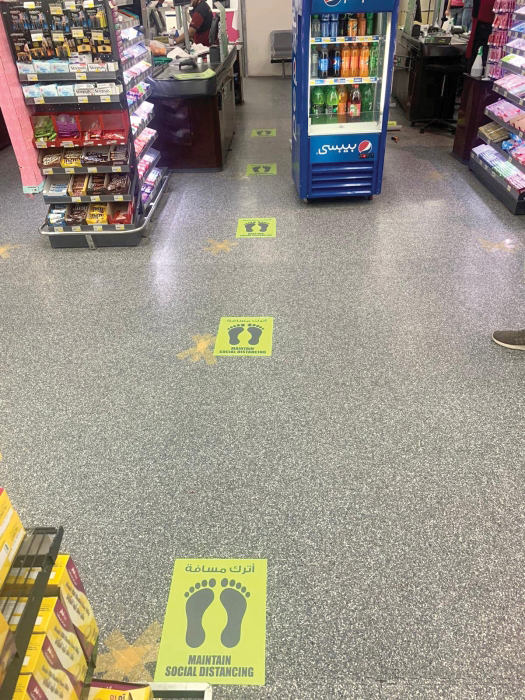
Photo credit: Qatar Tribune
This is likely not a full six feet apart, but it’s better than having people right next to one another.
And it’s painfully obvious. Put your two feet HERE in this spot until the next one opens up.
Even then, some folks get it wrong.
(I’ll admit, I had a slip-up a few weeks ago when I wasn’t standing on the circle and the grocery store cashier reminded me to back up. Talk about a humbling experience as a person focused on changing behaviors!)
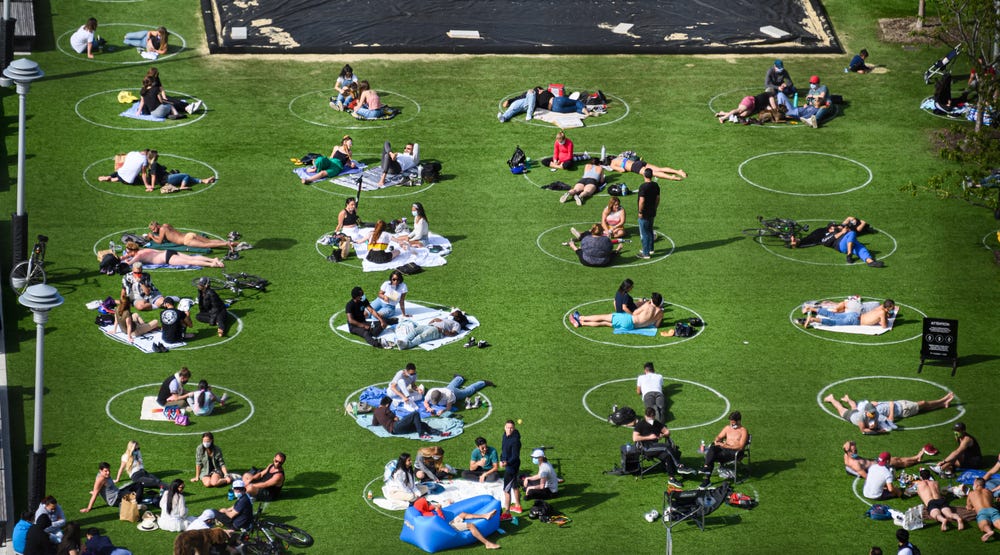
We’re even making it obvious outdoors!
This is a popular park in New York City that drew “social circles” six feet apart from other circles.
Certainly this doesn’t prevent people from being too close together within their circle, but does follow the well-known New York adage: “mind your own business”.
Some places managed to infuse fun with the painfully obvious, so we don’t feel as embarrassed about being terrible at estimating distances.
My takeaways
I think we can safely conclude that humans are terrible at determining distance and it’s a hard thing to communicate.
Overcoming this challenge in our own work will likely involve:
1. Making distances as obvious and as easy-to-follow as possible. And, it’s worth exploring how technology can help with this.
2. Appropriately infusing fun so it makes the “ask” less annoying for the audience.
3. Being diligent about not undermining our own causes (e.g. wildlife viewing guidelines) when jumping on messaging bandwagons.
More to come in the second part of this pandemusings series!



